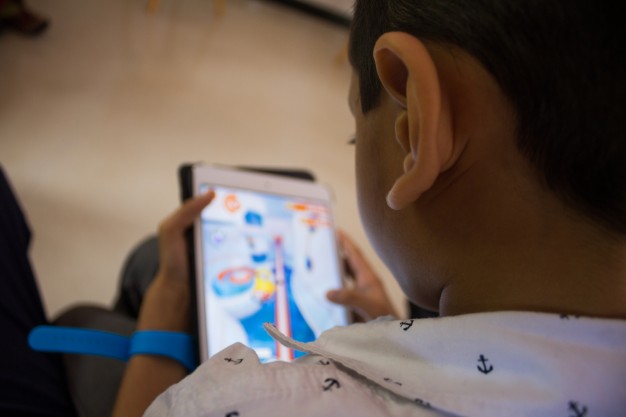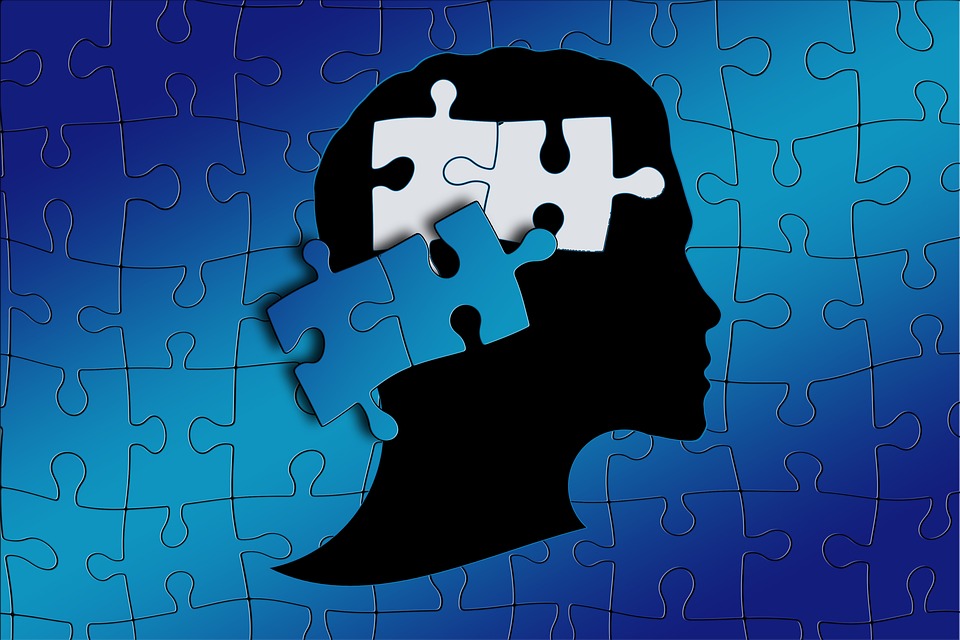Virtual autism from A to Z explained by the specialist who called it, psychologist Marius Teodor Zamfir
Interview by Ruxandra Hurezean, Journalist, Senior Editor – SINTEZA Magazine took to mr. Zamfir Marius Teodor, about Virtual Autism.
RH.: We would like you to make a brief introduction, including your future projects.
MTZ: Marius Teodor Zamfir, 42 years old, married, 3 children. I am an expert psychologist in clinical and forensic psychology, member of the Psychologists College of Romania since 2013, Member of the Psychological Expert Panel of Romania since 2013, Member of the Institute of Forensic Psychology, President and Founding Member of the Association for Child Mental Health from 2010, the Coordinator of St. Michael’s Center – for children with autism and counseling services at home, at the Children in Difficulty Foundation – CID Romania, since 2007.
Psychology is my second profession, the first faculty being a one with a real profile.
My experience in recovering children with autism begins in 2005 through a volunteer program at the Association for Early Intervention in Autism, a non-governmental association newly-formed by 3 young girls (one of them being my wife now) who worked at the first private and professional center established in Romania and who have decided to multiply the services provided in the recovery of children with autism in Romania, at a time when the demand for these types of services was very high. In Romania the incidence of autism increased very suddenly after the 2000s, with a very high peak in 2004-2005. Under this voluntary program, my work included, in addition to working with children with ASD,the participation in training the teams for therapy at home and supervising them. Through a competition of favorable circumstances, since 2007 I joined the CID-Romania Foundation as Project Manager for children with autism, and thats when the coordination of the therapy teams at the children’s home started. The Children in Difficulty Foundation – Romania (C.I.D. – Romania) is a charity foundation founded in 1991 by a group of people from the UK, in collaboration with Children in Distress UK. The Autism Project within the Kids in Difficulty Foundation Romania was born in 2002 and was the first child recovery project with ASD in Romania. In 2005, through a partnership with the Ministry of Education in Romania within the Special School for the Deaf No.1 were established groups / classes just for children with autism. Since 2017, since we started the Stop Virtual Autism Campaign, we have established a link with several US and French specialists who have also noticed this form of virtual autism. On September 5, 2017, we even organized a press conference, where we presented the preliminary results of my personal study and where representatives of the state institutions as well as specialists from the country and abroad were invited.
The study published in April 2018 (which can be downloaded from www.stopautismvirtual.ro or https://spiruharet.academia.edu/MariusTeodorZamfir ) is the first clinical study that confirms the existence of this form of autism, which I called virtual autism.
As future projects, I now work on implementing in schools and kindergartens a neuropsychological stimulation program for children and adolescents, based on Japanese mental arithmetic (with the help of Soroban), the development of memorization and attention, exercises for fastreading and even photoreading. This project has gone from the idea that throughout my professional career I had to learn all the time and nobody ever advised me how to memorize and learn better how to use the information assimilation techniques more quickly. More information on the following links https://cursuricopiibright.ro/ or https://soroban.ro.
R: What can you tell us about the term “virtual autism”?
MTZ: There is quite a lot of controversy over this term, most pros but there are cons too.
First, we need to understand what autism is. Autism is not a disease. For example, up to this date, there is no type of analysis (genetics, blood, imaging, etc.) that identifies autism. Autism is a pervasive developmental disorder of a neuro-biological nature, more precisely a neuro-connectivity disorder (some brain regions present too many or too few neural connections). What we call Autistic Spectrum Disorder (ASD) is actually a set of behaviors and features that we encounter in the child. Any instrument (psychological test) for evaluating autism, based on clinical observation, identifies the existence or absence of these behaviors, and so we can diagnose it. As in “classical autism,” these behaviors also appear in “virtual autism,” which is why I call it autism. However, over 75% of the cases that come to us are already diagnosed with ASD by the neuropsychiatrist.
Another important thing is related to the causality of this disorder. As I said earlier, we call autism a series of behaviors or features, but few people understand that behind these behaviors multiple and often even different causes can exist. At present time, for example, we know that autism involves up to 1,000 genes, and not necessarily those genes are “defective” but have a different way of expression. Gene expression is highly influenced by environmental conditions or epigenetic factors as we call them. Another causality can be intoxication with heavy metals, brain infections, metabolic disorders, autoimmune diseases, emotional and attachment problems, etc. However, in general, in my opinion, this it about a combination of factors in which genetic predisposition is the obligatory factor. In this regard, there is a recent study that concludes that the genetic predisposition to autism is much higher than the number of people with autism, more precisely, perhaps you or I have had this genetic predisposition, but not the other trigger factors of of this disorder.
I used the word virtual in the naming because there is a direct causal link between excessive consumption (over 4-5 hours / day) of virtual environment (smartphone, tablet, TV, laptop, etc.) and ASD specific behaviors. Originally in 2013, I used the term of “autisation” in a first published work, but since 2014 in all conferences I used the term Virtual Autism. Besides, in our country the term was accepted and taken over by most specialists in the field: doctors, psychologists, etc.
RH: You have performed the first clinical trial confirming the phenomenon of Virtual Autism, namely that certain children may trigger a form of autism-like disorder (ASD), the trigger factor being excessive consumption (over 4-5 hours / day) of the environment virtual (tablet, smartphone, tv, computer, laptop etc.) during child development 0-3 years. Can you tell us why did you consider such a study to be necessary in Romania?
MTZ: I have gone from two important factors, namely:
Since 2007, I have noticed a very different dynamics of recovery rates in some ASD children with whom I worked and who already had a autism diagnosis from an neuropsychiatrist. Specifically, they showed spectacular improvements (compared to previous cases) with the start of the recovery program on all development areas. If initially there were only a few cases, starting in 2010 they began to multiply vertiginously.
Initially I thought that due to my experience in developing and implementing psycho-behavioral intervention programs, they have this evolution. At that time I worked on a meta-analysis aiming to identify the potential causes of ASD, materialized in the paper “The Effects of Modern Civilization and the Environment – Causes of autism and comorbid disorders”, which I presented at the National Conference ” The Man Behind Autism “, 1-3 October 2011 in Focsani” and “Autism, Hopes and Results” Conference, 14-15 October 2011, in Bucharest. One of the points debated in this analysis was the TV’s influence on child development.
Thoroughly analyzing the anamneses, I identified a common point among these children who recovered faster. It’s about an average consumption of 4-5 hours / day of virtual environment (TV, tablet, phone, etc.) in the 0 to 3 year period. Another interesting fact is that most of these children, at the end of the therapeutic process, presented only small dysfunctional elements, being able to integrate into the mass education, functionally and without the need for specialized help.
Another important aspect was to observe the evolution of the children whose parents eliminated or not the virtual environment, whether or not the specialized therapeutical process started, each case with its dynamics and its specificity. We even had a few cases where children with autism who started therapy between 1.5 and 2 years in 3-4 months of therapy have “become” typical children, but only if the parents have listened to all the recommendations of the specialists. But also cases of children whose parents have not begun therapy and only have eliminated virtual media consumption and who have only slightly improved. I also had a lot of cases where I first talked by phone to parents, I identified the cause (virtual environment consumption), told them to eliminate this factor, and in 2-3 weeks when I went to the evaluation, to many items parents said, “Two or three weeks ago, my child did not do this, but now it does.”
I personally hardly have not had any newly diagnosed children in the past 5-6 years who do not have this element in history (excessive use of virtual environment in the first 2 years of life).
Another important factor is the fact that in Romania the consumption of virtual environment is very high, due largely to the political and socio-economic context. According to a study titled “Une année de télévision dans le monde” of the French institute Médiamétrie published in 2013, Romania was in 2012 was on the first place among the countries in Europe regarding the consumption of television programs, the Romanians watching TV , on average for 5 hours and 30 minutes a day.
One of the objectives of the study was also to identify the percentage of newly diagnosed children with autism spectrum disorder (ASD), which presents in anamnestic history an excessive use of virtual environment during the first three years of life between 2012-2017.
Thus, in the first stage I synthesized the data on the incidence of virtual environmental consumption in the period 2012-2017 on the total number of 110 subjects tracked during this period, since we started to have standardized data in this aspect.
The incidence of excessive virtual environmental use among children diagnosed with ASD for the whole of 2012-2017 was 75.45%, respectively 83 subjects. For each year the percentages data obtained are presented in the following table:
The significant increase in the incidence of excessive virtual environmental consumption from 37.5% in 2012 to 97.06% in 2017 seems to be directly related to the availability of affordable android tablets and phones in Romania, 2012 being the year of introduction of 4G technology that offers unlimited accessibility to the internet and complements the use of computer, laptop and TV with additional and much easier access in any location (car, restaurant, park etc.).
RH: How did you identified the subjects?
MTZ: The data resulted from the analysis of children diagnosed with ASD, assessed and followed longitudinally during the 2007-2017 period, at the recovery centers for children with autism of the Association for Child Mental Health (ASMC) and the Children in Difficulty Foundation – Romania (CID -Romania). We mention that both organizations provide services both in the respective centers and at the residence of the beneficiaries.
Because in Romania the recovery services for children with autism are not settled by the Government, parents bear almost entirely these costs. Therefore, after the initial evaluation, only 54.55% of the beneficiaries’ representatives requested access to the specialized therapy services. Out of the total number of beneficiaries, 84.26% of them had home-based services, while 15.38% were in the aforementioned centers.
RH: What the main findings of the study would be?
MTZ: From the American Academy of Pediatrics studies we know that for a child aged between 0 and 2 years television consumption is harmful, causing problems of sleep, eating, hyperactivity, attention deficit, etc.
In my study I used the following lots of subjects:
- A lot, called “Control Lot,” consisting of subjects diagnosed with ASD who did not present in the anamnestic history virtual environment consumption, or the consumption averaged less than 2 hours / day;
- – A lot, called “Screens Lot”, composed of subjects diagnosed with ASD, who presented in the anamnestic history excessive consumption (over 4-5 hours / day) of virtual environment in the period 0-3 years.
- – A lot called “Integrated Children Lot” included subjects from both the Control Lot and the Screens Lot. It was composed of children diagnosed with ASD who had significant improvements to the level of integration in mass education without specialized help, being independent and functional, even if in parallel some of them continue the specialized therapeutic intervention to improve certain areas and / or poor behaviors.
Using the American Academy of Pediatrics data, children with autism which in the anamnestic history had an excessive consumption of virtual enviroment (over 4-5 hours per day) in the 0-3 year period, it should have had an slower improvement in behaviors. However, the study that I conducted shows a therapeutically efficiency between 4 and 5 times higher for the “Screens Lot” versus “Control Lot”, and therapeutic efficacy over 7 times higher for „Integrated Children lot”.
As a final conclusion of the study, the different and favorable way in which children diagnosed with ASD, who presented in anamnestic history, in the 0-3 year period an average consumption of over 4 hours / day of virtual environment reacted to the therapeutic process compared to the control lot, suggests a direct causal link between this excessive consumption of screens and the behaviors and elements similar to those found in the ASD. This excessive use of the virtual environment in the 0-3 year period, cumulated with a genetic predisposition, can even produce a structure of neuro connectivity typical to children with ASD, affecting on a long-term the brain structures by the influence of epigenetic factors, caused by sensorimotor and socio-affective deprivation, thus increasing the globally incidence of autism at national and international level through the emergence of this new form of autism, called virtual autism.
RH: Did your research have been valued in any way, triggered a debate or some broader measure?
MTZ: Yes, for now just by promoting this phenomenon in the Virtual Autism Stop Campaign. For example, the impact of the press conference organized in September 2017 amounted to over 120 appearances on websites in the country and the Republic of Moldova and more than 20 appearances on international sites on 4 continents. Also different appearances on TV and radio.
Also the most important impact is the awareness of this phenomenon by most specialists, and here I refer to neuropsychiatric doctors, pediatricians, psychologists, etc.
If you ask me about concrete measures of the state institutions, nothing objective has yet been achieved in the national mental health plan.
RH: You work with children, small and very small. How remarkable and how difficult it is, can you share your clinical experience?
MTZ: As I was saying at the beginning, psychology is my second profession, which I would no longer change with any other profession. Satisfactions in this profession are very high, especially as we work with these children with the same symptoms as autism, where children do not recognize their parents, do not understand simple language, etc., and we get to return to the parents, but especially to the society, functional children.
RH: What more serious, more relevant cases did you have? What is the difference between known autism and virtual autism?
MTZ: Cele mai îngrijorătoare situaţii au fost de curând, când am avut două cazuri diferite, la un interval de o lună unul de celălalt, ale unor copii de 6 luni, unul din Suceava şi unul din Tulcea, pe care părinţii, fără să îşi dea seama, i-au lăsat de la vârsta de 4 luni (de când au introdus diversificarea bebeluşului) peste 4-6 ore / zi la tabletă şi mobil. La vârsta de 6 luni părinţii au observat deja impactul acestor dispozitive electronice, în sensul că bebeluşii păreau că nu mai aud, nu mai erau interesaţi de prezenţa şi vocea părinţilor şi bunicilor, prezentau anumite comportamente stereotipe şi repetitive şi intraseră parcă într-o lume a lor. În acel moment părinţii şi-au dat seama că ceva nu este în regulă şi au început să caute în mediul online informaţii. Aşa au găsit pagina de facebook şi siteul StopAutismVirtual şi m-au contactat. În acest moment au eliminat orice dispozitiv electronic din viaţa copilului şi au observat schimbări majore şi rapide. În continuare sunt sub supraveghere şi sperăm ca impactul să fie minor, având în vedere vârstă foarte mică la care au identificat problema, dar şi plasticitatea creierului în această perioadă. Astfel de cazuri ne ajută să înţelegem
Most worrying situations happened recently, when I had two different cases, one month apart, of a 6 month old children, one from Suceava and another one from Tulcea, whom the parents, without realizing , left them from 4 months of age (since they introduced baby diversification) over 4-6 hours / day to waych the tablet and mobile phone. At the age of 6 months, parents have already noticed the impact of these electronic devices in the sense that the babies seemed to stop hearing, were no longer interested in the presence and voice of their parents and grandparents, presented stereotypical and repetitive behaviors and seemed to entered in a world of their own. At that time, parents realized that something was wrong and began to search for information online. So they found the facebook page and the StopAutismVirtual site and contacted me. At this point, they removed any electronic device in their child’s life and noticed major and rapid changes. We are still under surveillance and hope the impact is minor, given the very low age at which they identified the problem, but also the plasticity of the brain during this period. Such cases help us to understand the necessity and continuation of this campaign, for educating and informing the population and public institutions.
The neurological difference between the two types of autism is the following: in the case of children with “classical” autism, neurological impairment is serious and involves irreversible destruction of certain areas of the neurological system, namely the destruction of neuronal links (synapses, axons, dendrites), in the case of children with virtual autism it is a lack of proper development of the neurological system due to the lack of stimulation of motor, sensory, affective and psychosocial stimulation. So in this case it is not about the destruction of neurological links, but about their inexistence or the reformatation of these links, due to inadequate stimulation. Most of the time, the child receives only certain sensations (visual and / or auditory) from a virtual environment, and can not correlate these visual and hearing sensations with other sensations; vestibular, tactile, odor, taste, therefore unable to develop properly at the neurological level.
RH: How do parents react: are they cooperating, recognize their responsibility or oppose the collaboration?
MTZ: All the parents I have interacted with have taken the responsibility and even mobilized better. I believe that no parent wants to hurt their child, which is why the main purpose of the campaign is to educate and the awareness of parents about these risks. We want to stop hearing the famous phrase “IF I KNEW THAT IT WASN’T RIGHT TO LET HIM AT THE TV, I WOULDN’T…THEY WERE CARTOONS ESPECIALLY DESIGNED FOR THE BABIES…”
RH: What about the specialists? How did they react to these currents, challenges?
MTZ: In Romania, most of the specialists, and in particular doctors in the psychiatric hospitals, recognize the existence of this phenomenon, and at least in Bucharest I do not think that a parent leaves from the doctor’s office without receiving recommendations for the elimination of virtual consumption.
Instead, both colleagues in the US and in France have a fairly high resistance, especially from the part of the specialists. At least from this point of view we are one step ahead of them.
RH: The children can be recovered, which would be the solutions in general?
MTZ: Yes, they can be recovered, but with certain conditions. First, a diagnosis as early as possible, under the age of two. The younger the age in problem identification, the faster the problems go away. The most important condition is the elimination of the cause – the use of the virtual environment, after which the start of a recovery program as soon as possible.
RH: In terms of health policies, there are concerns about this new segment?
MTZ: Unfortunately, there is still nothing concrete, as I said. For example, in the Stop Virtual Autism Campaign, one of the activities is also the distribution of informative materials in maternity wards – posters, flayers. For two years we have not succeeded, although we have made many efforts, and somehow, these materials be centralized distributed with the help of the Ministry of Health or other competent institutions, in the Maternity wards and in the “Baby Package”. We’re still having them in the warehouse.
Now we are in talks with the Senate Health Commission to hold a debate on this topic on 12 June this year.
RH: Thank you!






